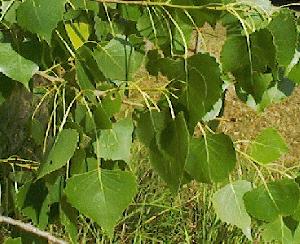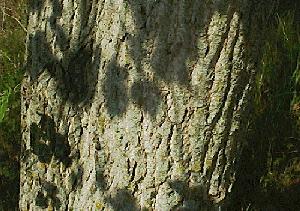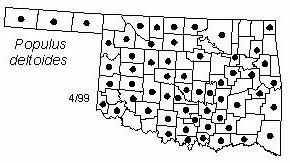

Tree to 25 m (80 ft) tall and 120 cm (50 in) diameter. Bark yellowish and smooth on young branches, becoming pale gray, rough, thick, and deeply furrowed on old branches and trunks. Twigs thick, green to yellow-brown, glabrous, with large triangular leaf scars. Buds large, long-pointed, shiny brown, with several scales. Leaves triangular, acuminate, nearly straight across the base, 8-18 cm (3.1-7 in) long and 7-13 cm (2.8-5.1 in) wide, glabrous, coarsely toothed, shiny green on both sides. Flowers numerous, very small, in drooping cylindrical catkins 5-9 cm (2-3.5 in) long, staminate and pistillate on different trees, in early Spring before leaves. Fruits elliptical capsules about 10 mm (0.4 in) long on slender stalks in drooping clusters to 20 cm (8 in) long, splitting in late Spring and early summer to release many very small seeds in tufts of cottony hairs.
Distribution: Native to the eastern half of the U. S. and southeastern Canada.
Habitat: Usually very abundant in disturbed floodplain sites, but is often found in upland habitats.
NWI status: FAC
Comment: The species is sometimes divided into subspecies or varieties, but these taxa seem to intergrade in Oklahoma. The soft light wood is used for boxes and crates, paper pulp, and fuel. Populus is the ancient name of the European poplars; deltoides refers to the triangular leaf.
Distribution in Oklahoma: 
BACK
NEXT
RETURN TO INDEX
Last update: 9/15/99
 Go to Oklahoma Biological Survey Home Page
Go to Oklahoma Biological Survey Home Page
 Disclaimer
Disclaimer